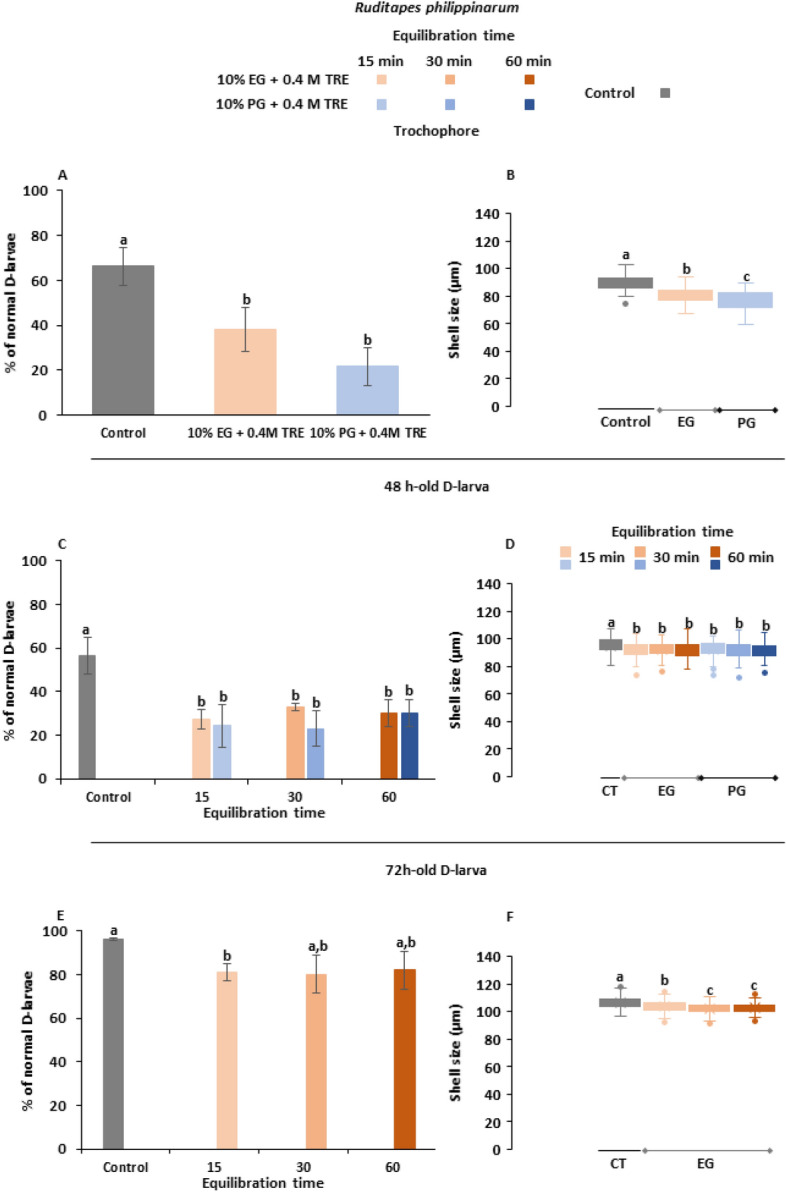Figure 6.

Post-thaw fitness parameters on larvae of Ruditapes philippinarum cryopreserved at trochophore, 48 and 72 h-old D-larval stages: (A) survival of cryopreserved trochophores; (B) shell size of developed D-larvae from cryopreserved trochophores; (C) survival of cryopreserved 48 h-old D-larvae; (D) shell size of developed D-larvae from cryopreserved 48 h-old D-larvae; (E) survival of cryopreserved 72 h-old D-larvae; (D) shell size of developed D-larvae from cryopreserved 72 h-old D-larvae. Larvae were cryopreserved using two CPA solutions: 10% ethylene–glycol (EG) + 0.4 M trehalose (TRE) and 10% prophylene-glycol (PG) + 0.4 M TRE (final concentrations), both prepared in filtered sea water (FSW). Increasing equilibrium times were tested on D-larvae. Results are expressed as mean normal D-larval percentage ± standard deviation, SD (n = 100, 3 replicates per treatment) or as box plots for shell size assessments (µm) considering mean value (mean ± standard deviation, SD) (n = 35, 3 replicates per treatment). Different letters show statistical differences with p˂0.05.
